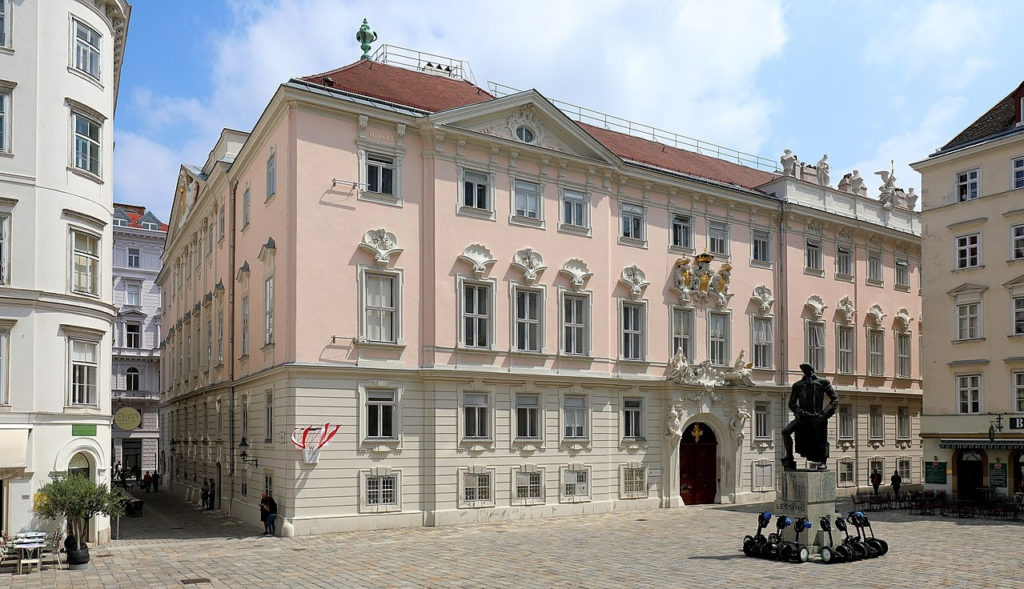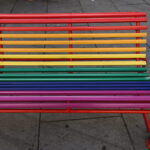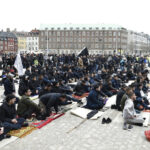The Austrian Constitutional Court has ruled that Austria’s ban on the wearing of headscarves in public schools violates the freedom of religion and the freedom of expression and therefore is unconstitutional.
The case highlights the constitutional restraints that European governments face in regulating political Islam and promoting integration.
The headscarf ban, introduced in June 2019 by a governing coalition comprised of the center-right People’s Party (ÖVP) and the populist Freedom Party (FPÖ), was an extension of a groundbreaking October 2017 ”Integration Law” that sought to improve the integration of Muslims into Austrian society.
The 2017 law banned face coverings — including burkas, niqabs or masks — in public spaces. The 2019 law extended that ban to preclude children under the age of ten from wearing headscarves in primary schools.
The 2019 law, which did not explicitly refer to Muslims or Islam, banned ”any clothing that is ideological or religious and that involves covering the head.” The law defined head coverings as ”any type of clothing that covers the entire head hair or large parts of it.” The text explained that the law was necessary to promote ”the social integration of children according to local customs and traditions, the preservation of the basic constitutional values and educational goals of the Federal Constitution, as well as the equality of men and women.”
At the time, the government clarified that the law did not ban the patka head covering worn by Sikh boys or skullcaps worn by Jewish boys.
Austria’s Islamic Faith Community (Islamische Glaubensgemeinschaft in Österreich, IGGÖ), an official Muslim umbrella group, condemned the law as ”destructive” and a ”direct assault on the religious freedom of Austrian Muslims.” The group vowed to challenge the law at Austria’s constitutional court.
In January 2020, the IGGÖ filed a lawsuit after Minister of Integration, Susanne Raab, announced that the government would apply the headscarf ban to girls up to 14 years of age. In its lawsuit, IGGÖ said that in Vienna, two girls wearing a hijab were prohibited from attending class, but that their parents relented after discussions with the school management.
In its December 11 ruling, Austria’s Constitutional Court (Verfassungsgerichtshof, VfGH) stated:
”Pursuant to Section 43a, Paragraph 1, Clause 1 of the School Education Act [§43a SchUG], schoolchildren are prohibited from wearing ideologically or religious clothing that involves covering the head until the end of the school year in which they turn ten.
”Two children and their parents opposed this regulation. The children are raised religiously in the Sunni or Shiite legal school of Islam. In this provision, which is ultimately aimed at the Islamic headscarf (hijab), you see a disproportionate interference with the right to religious freedom and religious child-rearing.
”With the decision announced today, the Constitutional Court has lifted this ’headscarf ban’ as unconstitutional.
”A regulation that only affects a certain group of female students and that remains selective in order to ensure religious and ideological neutrality as well as gender equality misses its regulatory goal and is irrelevant. §43a SchUG therefore violates the principle of equality in connection with the right to freedom of thought, conscience and religion.”
In summary, some important points of this ruling:
- ”The principle of equality, in conjunction with the right to freedom of thought, conscience and religion, establishes the state’s religious and ideological neutrality. When designing the school system, the legislature is required to comply with this requirement by treating various religious and ideological convictions based on the principle of equality. The school is based, among other things, on the basic values of openness and tolerance (Art. 14 Para. 5a B-VG).”
- ”With §43a SchUG, however, the legislature picks out a specific form of clothing with religious or ideological connotations, which is in one way or another comparable with other, but not forbidden, religious or ideological clothing habits.”
- ”A regulation that selectively picks out a certain religious or ideological conviction by deliberately privileging or disadvantaging such convictions requires a special objective justification with regard to the requirement of religious and ideological neutrality.”
- ”The wearing of the Islamic headscarf is a practice that is applied for various reasons. The possible religious or worldview explanations that headscarf wearers give to justify the wearing of the headscarf, are manifold. By wearing a headscarf, you can simply express your affiliation with Islam or the orientation of your own life to the religious values of Islam. Furthermore, wearing the headscarf can also be interpreted as a sign of belonging to Islamic culture or of adherence to the traditions of the society of origin. The Islamic headscarf therefore has no clear and unambiguous meaning.”
- ”The Constitutional Court is, however, barred from adopting a certain interpretation as its own when there are several possibilities for interpreting a religious or ideological symbol, particularly when it comes to questions of freedom of religion and belief, and to base its assessment of the legal rights of the existence of such symbols in state educational institutions on this.”
- ”The selective ban, which according to §43a SchUG only applies to girls and prohibits them from wearing an Islamic headscarf until the end of the school year in which they reach the age of ten…can also have a detrimental effect on the inclusion of affected schoolgirls and lead to discrimination because it carries the risk of making it difficult for Muslim girls to access education or of marginalizing them from society.”
- ”With regard to the protection of schoolgirls against social pressure from their classmates, a concern raised by the federal government, the Constitutional Court does not fail to recognize that in schools there can also be ideological and religious conflict situations. However, this circumstance cannot justify the selective prohibition…because the prohibition according to §43a SchUG affects precisely those pupils who do not disturb the school peace themselves.”
- ”It is incumbent on the legislature to create suitable instruments for conflict resolution, taking into account the requirement of neutrality and the constitutional educational mandate, should the legally provided educational and security measures for the maintenance of the school rules not be sufficient to resolve such conflict situations and to end forms of gender-related or religiously justified bullying.”
IGGÖ President Ümit Vural welcomed the high court ruling:
”The IGGÖ opposes coercion of any form. We neither approve of a derogatory attitude towards women who decide against the headscarf out of personal conviction, nor can we agree to the restriction of religious freedom of those Muslim women who understand the headscarf as an integral part of their lived religious practice.
”The lawsuit was directed against the undermining of the fundamental rights guaranteed by the constitution, freedom of belief, conscience and religion as well as equality before the law.”
Minister of Education Heinz Faßmann said that the high court’s ruling was regrettable: ”It does not give girls the opportunity to make their way through the education system free of coercion.”
Minister for Women Susanne Raab said that the government would accept the decision ”because we live in a constitutional state.” At the same time, she said, from both an integration perspective as well as from a women’s political point of view, the ruling was ”regrettable when little girls have to wear a headscarf and cover themselves in primary school.”
FPÖ leader Norbert Hofer expressed defiance: ”With a two-thirds majority in the National Council [lower house of Parliament], we have the opportunity to put the regulation back into force through a constitutional law.”
FPÖ city councilor for Vienna Dominik Nepp said the ruling was ”a sad day for children’s rights and a dramatic kneeling to political Islam.” He called for an ”immediate correction by the National Council so that the headscarf as a symbol of political Islam and sexualization is not offered in kindergarten and elementary school.”
The leader of the FPÖ in Upper Austria, Manfred Haimbuchner, said that the ruling amounted to a ”civilizational regression for society.” He added:
”The prohibition of the wearing of Islamic headscarves in elementary schools was never intended to be a restriction of religious freedom, but rather as a protective mechanism against sexualization and Islamic oppression of underage children. We must accept the fact that the Constitutional Court has now repealed this law as unconstitutional.
”Unfortunately, this judgment is a step backwards in terms of civilization. The door has now been opened to a religiously motivated oppression of girls, an oppression that we do not want in our society.
”Therefore, it is now important to study this judgment carefully and to draw conclusions from it as to how such a ban can still be implemented for the benefit of the children. The search for a constitutional majority for appropriate legislation in parliament is of course an option.”
Austria’s Muslim population now exceeds 700,000 (or roughly 8% of the total population), up from an estimated 340,000 (or 4.25%) in 2001 and 150,000 (or 2%) in 1990, according to data compiled by the University of Vienna. If high levels of migration continue, the Muslim population of Austria is forecast to reach nearly 20% of the total population by 2050, according to the Pew Research Center.
The massive demographic and religious shift underway in Austria, traditionally a Roman Catholic country, appears irreversible. In Vienna, where the Muslim population now exceeds 12.5%, Muslim students already outnumber Catholic students at middle and secondary schools. Muslim students are also on the verge of overtaking Catholics in Viennese elementary schools.
At the same time, Austria has emerged as a major base for radical Islam. Austria’s Agency for State Protection and Counterterrorism (BVT) has warned of the ”exploding radicalization of the Salafist scene in Austria.” Salafism can be described as an anti-Western ideology that seeks to replace liberal democracy with Islamic law.
In other European countries, courts have also overturned government attempts to regulate political Islam. The results have often been inconclusive and confusing.
In Germany, for instance, the Federal Constitutional Court (Bundesverfassungsgericht) in March 2015 overturned a blanket headscarf ban in schools and emphasized the importance of religious freedom. Since then, every federal state has developed different regulations on the wearing of headscarves in schools. In January 2020, that same court ruled that a headscarf ban for legal trainees is constitutional.
In Spain, the Supreme Court (Tribunal Supremo) in February 2013 ruled that a municipal ordinance banning the wearing of Islamic burkas in public spaces in Catalonia was unconstitutional. The Catalan government responded by approving a region-wide burka ban.
In France, girls have been prohibited from wearing headscarves in schools since 2004. In July 2010, France’s Constitutional Council (Conseil Constitutionnel), the country’s top legal authority, approved a law banning full-face veils in public. The law, which prohibits the wearing of burkas and niqabs in all public spaces in France, took effect in April 2011.
Soeren Kern is a Senior Fellow at the New York-based Gatestone Institute.





